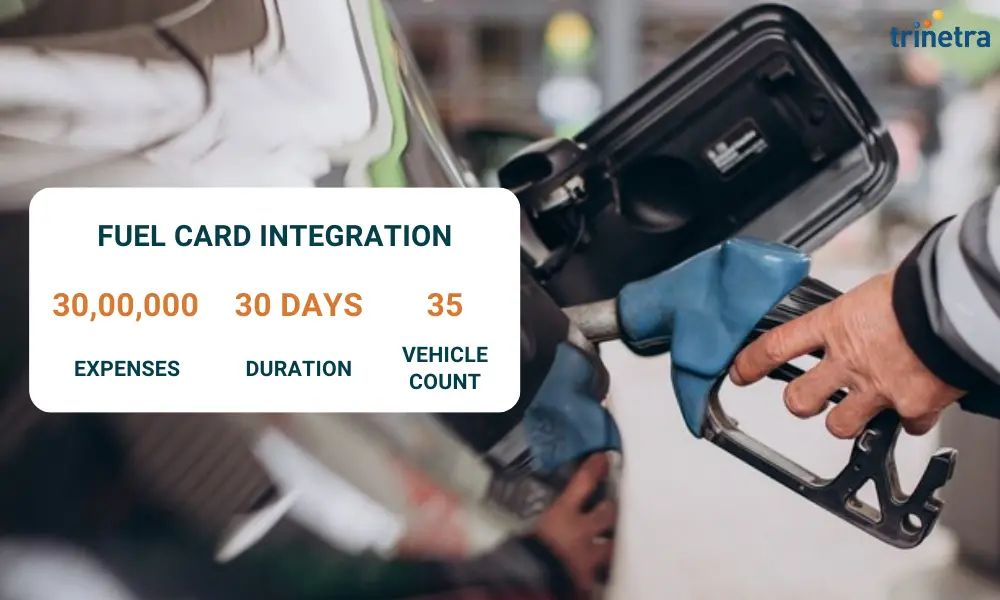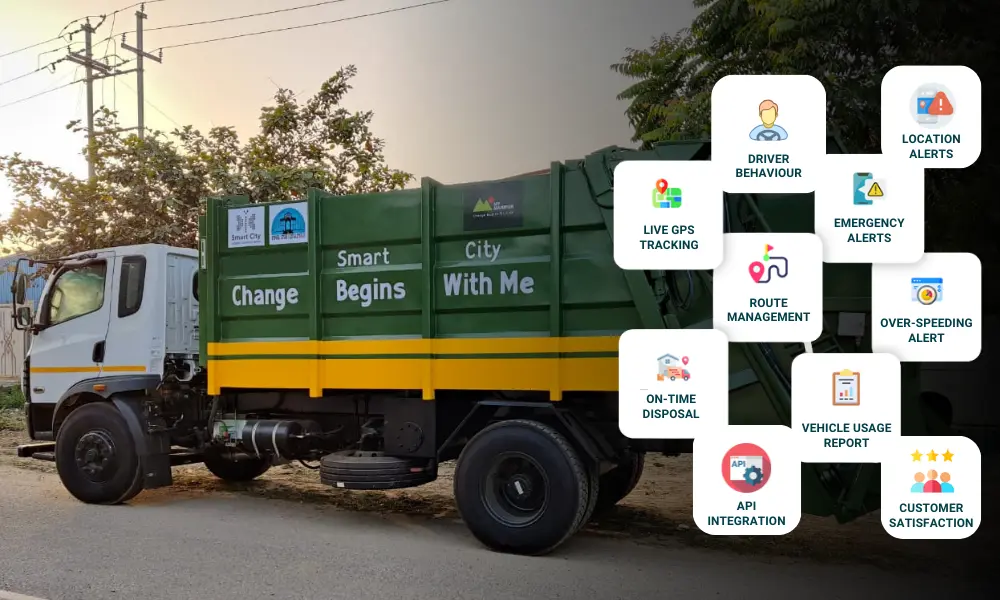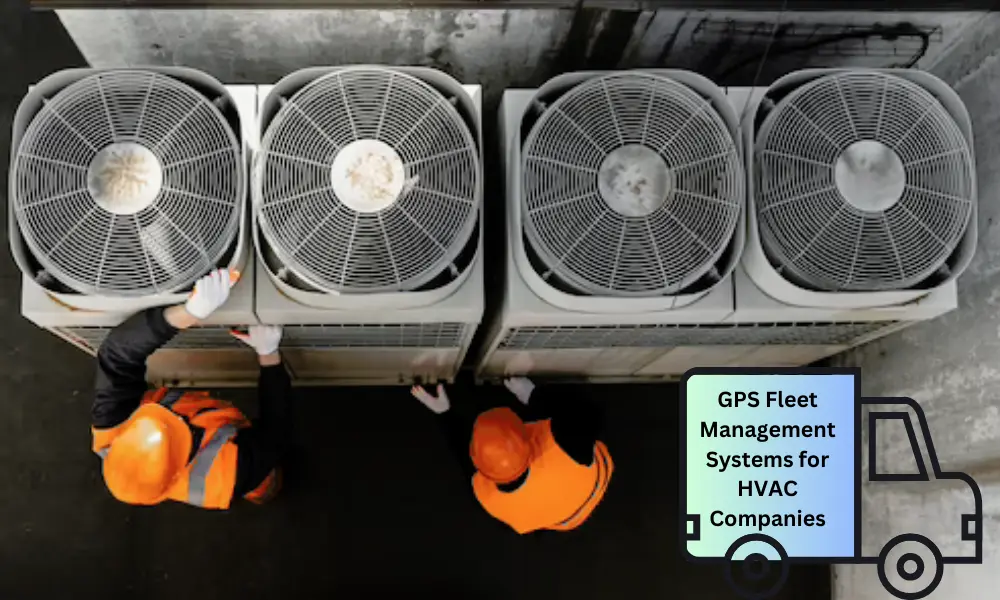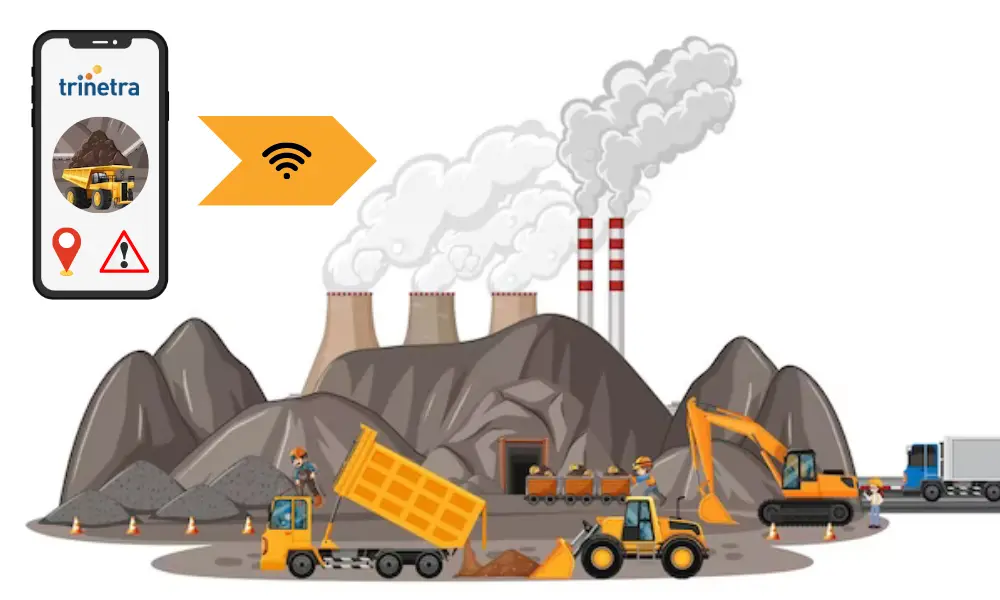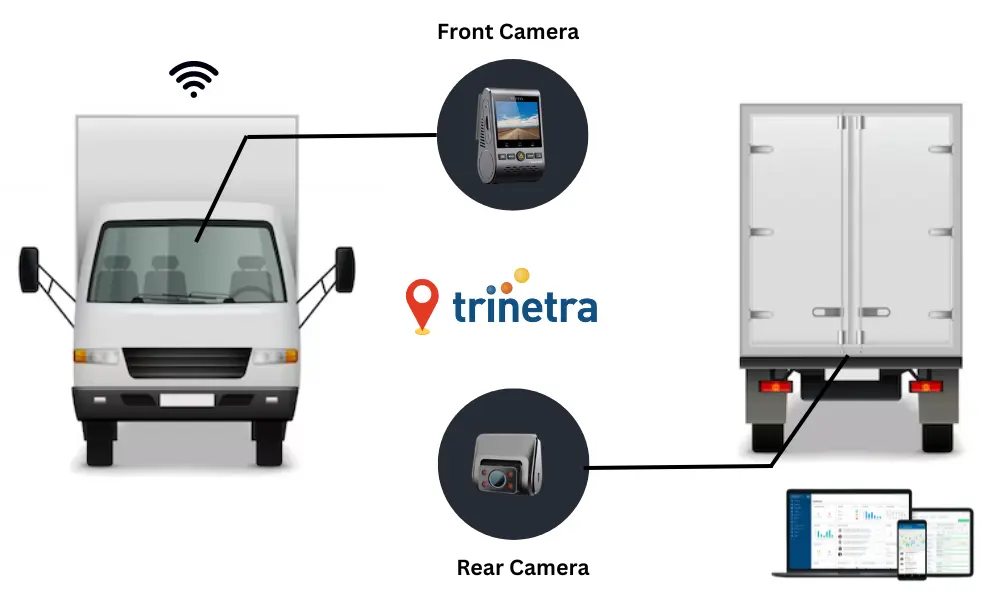Innovations are rapidly transforming the mining industry owing to its extensive scope and scale. Fleet/Transport Managers prioritize safety and continuous vehicle operability through regular maintenance. They work to achieve sustainability goals, in reducing carbon footprint, lowering operational costs and enhancing profitability. With these key performance indicators (KPIs) in main focus, Trinetra has identified technology trends that will be able to advance mining capabilities in the coming decade.
After recovering, the Mining industry is increasing its investment in innovative technology. A fleet management system is crucial for the mining industry, as fleet managers must track assets, vehicles, heavy equipment and personnel in remote and sometimes hazardous areas. The managers must warrant optimal utilization of assets and also schedule regular maintenance for equipment and vehicles to minimize downtime and yield ROI.
Efficient fleet management is crucial for the Mining industry. Fleet/Transport Managers need to ensure optimal asset utilization, schedule regular equipment and vehicle maintenance and minimize downtime. Given the extensive opportunities for leveraging new technologies, innovation is rapidly advancing in the mining industry. Let us discuss some important emerging technology trends.
Use of Drones
Mining is perilous. Remote locations, theft risks, costly mistakes, and sudden accidents demand precautions. Companies spend millions for asset and personnel safety. By enhanced drone monitoring, a detailed view aids managers in daily operations. Ensure adherence, track valuable assets, manage fleet, and monitor KPIs historically and in real-time. Drones offer safety, security, and productivity and help to assess risky areas, report interventions, secure stockpiles, and provide accessible surveillance. It helps in compliance too.
Fleet Tracking with GPS tech
GPS Tracking and telematics enable the seamless monitoring of mining equipment, assets, and fleet vehicles. It can cover all aspects, right from extraction to distribution, in managing generators, trucks, buses, and heavy machinery. Enhanced asset utilization and fleet management can boost efficiency, productivity, and lower expenses. Real-time GPS monitoring helps in alerts, improved performance, in scheduling, fuel cost reduction, advanced reporting, and enhanced safety measures that lead to improved profitability.
The fleet tracking system enabled with telematics offers the Geofencing functionality that enables fleet managers to prevent theft and misuse of vehicles by monitoring the whereabouts of vehicles on the road during working hours. The application helps drivers to be more compliant and improves safety overall in the fleet business.
Automation
Automation technologies bring undeniable benefits. Mining companies adopting automation witness significant productivity boosts and cost reductions. Some have experienced a 15-20% increase in productivity. Safety is also enhanced, as automated equipment reduces the need for miners in unsafe areas, while extracting higher outputs. Mining companies worldwide are rapidly embracing automation to modernize operations. This shifting landscape offers substantial value to the mining sector and stakeholders. The mining automation market is predicted to grow by almost 50% in the next six years, thanks to technological innovation for improved productivity, safety, and cost reductions.
Cloud Technology
Mine managers utilize a user-friendly SaaS platform for secure data collection, analysis, and management. Easy integration of assets, vehicles, and equipment enables managers to access valuable insights from comprehensive data sets, optimizing site processes and reducing costs. Investments in cloud infrastructure, AI, and IoT greatly benefit mining companies concerned about data security and seeking the advantages of automation.
Use of Renewable Energy
Renewable energy adoption is a prominent technological trend in the mining industry. Mining companies endeavour to decrease electricity expenses and reduce their carbon footprint to ensure long-term sustainability. By minimizing operational costs and showcasing corporate responsibility to stakeholders, shareholders, and customers, mining operations can capitalize on renewable energy sources to keep steady profitability in the years ahead.
Technology for Compliance and Safety
Utilizing technology for enhanced safety and compliance is a pivotal focus in the mining industry. The COVID-19 pandemic has further highlighted health and safety concerns, prompting the adoption of technological advancements worldwide. Automated and technology-driven mine sites reduce traditional mining risks, safeguarding employee well-being, while improving productivity and efficiency.
Implementing technology eliminates human errors and ensures accurate data by establishing a centralized data source, reducing issues like double handling and inaccuracies. Common applications of technology for safety and compliance include lift safety, crash avoidance, real-time fleet and asset scheduling, employee training, and accident tracking and reporting.
Digital solutions such as sensors, drones, and technology-based procedures make operating site or plant equipment safer and more convenient for workers. Vehicles used in haulage are equipped with alarms and auxiliary safety functions, minimizing the likelihood of accidents, injuries, and fatalities.
In the future, technology may minimize the need for on-site human presence, reducing the risk of human errors. The mining industry is anticipated to become partially digitalized, with fewer humans directly involved in operations.
Telematics plays a crucial role in mining companies’ reliance on technology. Telematics platforms provide valuable insights into on-site operations, enable in-depth analysis of big data, and help prevent severe accidents and loss of life. Fleet management and telematics solutions drive the emerging innovative technological trends in the mining industry.


